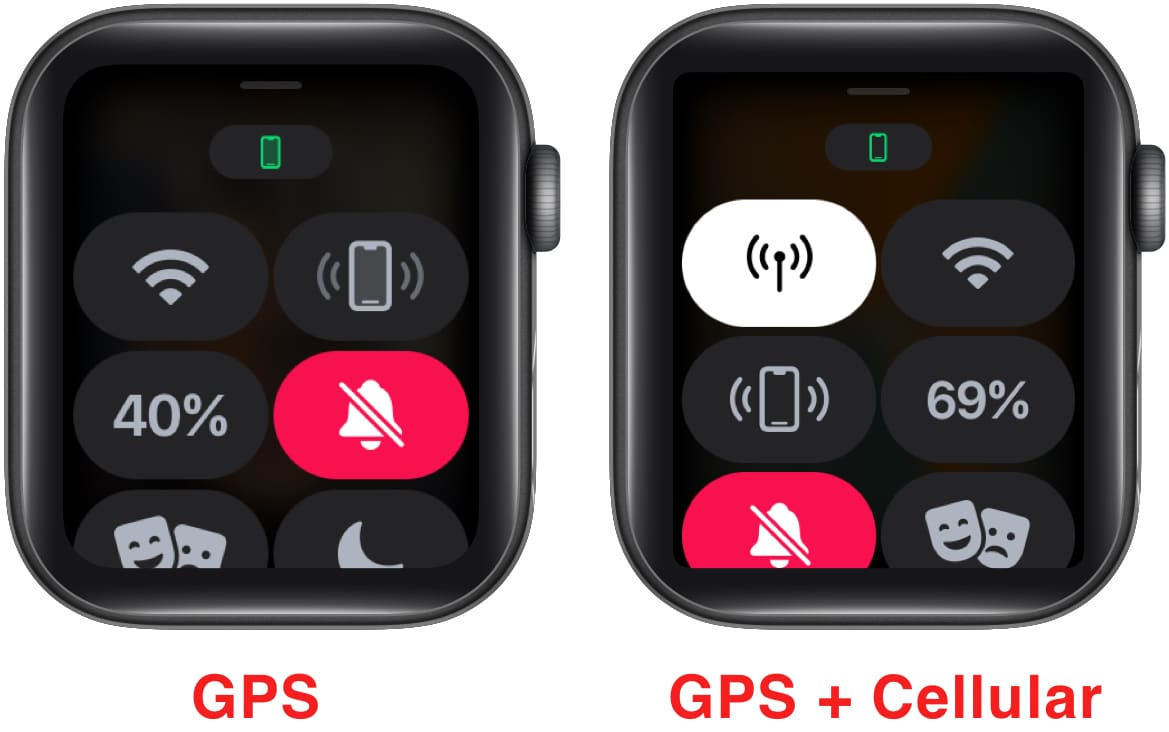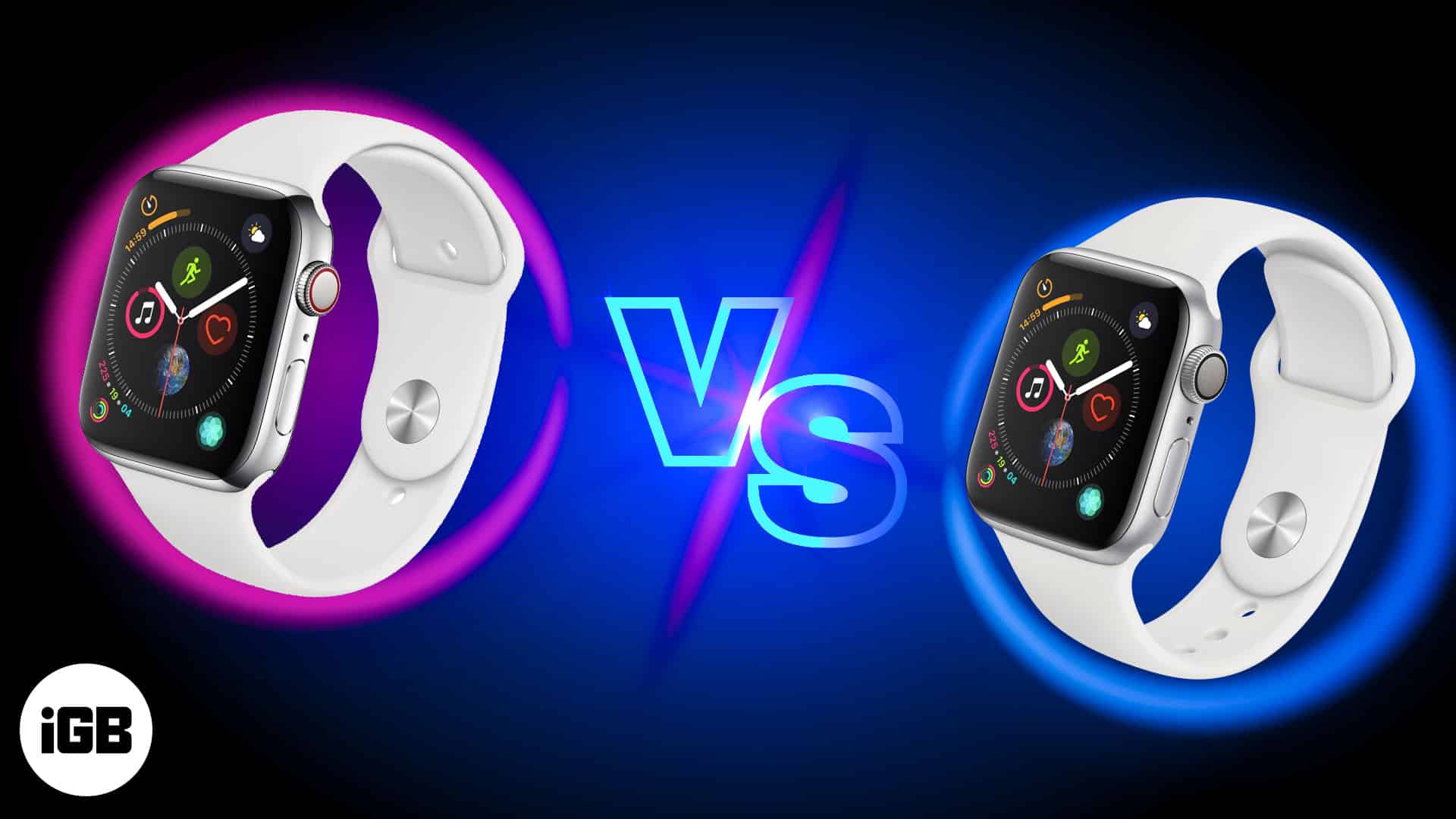With a new line of Apple Watches coming soon, you’re faced with an all-important question: do you go for the base variant or the GPS + Cellular version? At first glance, the differences between the two don’t seem to be that distinctive. However, to make an informed decision, it’s better to do an Apple Watch GPS vs. Cellular comparison.
Here, I’m going to compare key differences between the two versions. This includes the likes of battery life, connectivity, and carrier support, among others. Hopefully, these key differences will give you better insight into what you’re acquiring with either version. This will help you purchase the ideal Apple Watch for your needs!
Apple Watch GPS vs. GPS + Cellular: Key differences
Since the recent iterations of the Apple Watch have introduced the Apple Watch GPS vs. Cellular debate, there was no doubt that the new lineup of Apple Watches, Series 8 and Ultra, would also provide both options at the very least. So, whether you choose to purchase an older or newer version of the Apple Watch, understanding the key differences between GPS and GPS + Cellular would be helpful.
Let’s take a look at the Apple Watch GPS vs. Cellular comparison in a few crucial categories!
Connectivity

Whether you look at the band options, carrier restrictions, or prices, one of the most important differences between the GPS and GPS + Cellular versions is the connectivity. With the latter option, you can leave your iPhone at home without any worries. Thanks to cellular connectivity, you’ll be able to pick up and make calls or send and receive text messages. Moreover, thanks to the addition of GPS, your jogs, runs, and general navigation won’t be affected either.
For the Apple Watch GPS version, you can receive and make calls or send text messages only if your iPhone is near you and the watch itself. Basically, if you’re someone who always likes to keep their phone on them, the Apple Watch GPS version will be more than enough for you.
Another thing to note is that Apple hasn’t skimped on the basic connectivity options – both watches support Wi-Fi and Bluetooth connectivity. So, your choice will boil down to whether or not you’d like to keep your iPhone with you at all times.
Carrier support
Currently, only the GPS + Cellular version of the Apple Watch allows you to have the same carrier plan as that of your iPhone. However, there is an additional charge of about $10 or so. Regardless of the price, this is a useful feature, and it’s thanks to the LTE connectivity support that the GPS + Cellular version provides.
This carrier support ensures that you don’t need to carry your iPhone everywhere you go. With LTE support, your Apple Watch can place calls, send texts, use GPS and Maps, and even complete Siri integration. However, keep in mind that the Apple Watch won’t be provided with a separate calling number. The number that you will be assigned pertains to the account number.
Also, any pay-as-you-go international plan on your carrier plan will also incur extra charges if you use your Apple Watch abroad. I recommend keeping the Apple Watch Cellular plan inactive when traveling internationally.
As for the base variant of the Apple Watch with GPS support, you’ll need to have your iPhone with you at all times. Only then will you be able to make calls and send text messages. There’s no extra carrier plan or additional charges for the Apple Watch GPS version.
eSIM and International Roaming
The recent unveiling of the iPhone 14 lineup has also hastened the shift to eSIMs. Of course, the eSIM technology has been available on the iPhone for the longest time – the iPhone XR provided support for eSIMs long before the technology became popular.
For the uninitiated, eSIMs are also referred to as embedded SIMs. They function the same way as our usual SIM cards. However, these can be programmed to your requirements and don’t have a physical state. So, you don’t need to insert the SIM into the phone. All you need to do is log into the device with your carrier information, and your carrier will link the phone to their network.
A point to be noted here is that eSIM support will only be provided to iPhone 14 models in the US. In other major countries, carrier integration for eSIMs is bound to take some time.
When it comes to international roaming, you’ll be able to store multiple eSIMs on your phone. However, there are a couple of issues here. Firstly, you’ll only be able to use a carrier that provides eSIMs. Secondly, you’ll have to be mindful about where you’re traveling as eSIM support may not be widely available.
So, what does this entail for your Apple Watch? For those of you who opt for the Apple Watch GPS + Cellular option, it’ll be easier for you to sync your iPhone 14 with the Apple Watch itself, especially when you’re using the same carrier. Moreover, you’ll be able to switch eSIMs without any hassle.
Of course, you’ll still have to consider where you’re traveling and the local eSIM support. For now, eSIM integration and traveling within the US should be much more convenient.
Apple Music and Podcasts
Both variants of the Apple Watch allow you to stream Apple Music, audiobooks, and Apple Podcasts if you’re connected to the Wi-Fi. However, the cellular version has an advantage here as the streaming can also be done through cellular data.
All your entertainment options are synced to your Apple Watch (GPS + Cellular) from your iPhone. This helps you consume the content without being connected to the Wi-Fi or Cellular network. Additionally, you won’t need to have your iPhone nearby, either!
However, the Apple Watch GPS model requires you to have your iPhone with you and connected to the Watch for your entertainment options. Whether it’s streaming music on Apple Music or expanding your horizons through Podcasts on Apple Podcasts, the iPhone is a must if you’re wearing the Apple Watch GPS model.
Battery life
Since the Apple Watch GPS + Cellular model uses two connection types, it’s slightly obvious that the model’s battery life isn’t as good as the GPS counterpart. Nonetheless, the difference is minimal and can be noticed only if you’re using both GPS and Cellular simultaneously. While the battery life ultimately comes down to your usage patterns, Apple states that both versions offer 18 hours of battery on a single charge.
For the Apple Watch GPS + Cellular model, the 18-hour battery life is expected if you connect it to the iPhone for 14 hours and use the LTE for 4 hours. You can take a look at the battery life in more detail below:
- Talking: 1.5 hours when using Cellular.
- Audio: 11 hours of playback if you listen to music directly through Apple Storage. If streaming, the playback cuts down to 8 hours.
- Workout mode: 11 hours of indoor workout, 7 hours when using GPS, 6 hours if you’re using both GPS and Cellular.
As you can see from the above, neither model offers exceptional battery life when being used for long-distance running. Thankfully, the introduction of the new Apple Watch Ultra should fix this problem.
Case materials, band options, and display
For the difference in their prices, you’d expect some proper differences between the models when it comes to case materials. The Apple Watch GPS model comes in an aluminum case, which provides a sturdy feel. Thankfully, it also looks quite elegant. Nonetheless, the Apple Watch GPS + Cellular model has better stainless steel and titanium case options. These give the watches a more premium feel and remarkably improve the aesthetics.
Coming to their display materials, the Apple Watch GPS model comes with Ion-X glass material. The GPS + Cellular model’s stainless steel and titanium cases complement a sapphire crystal display. Both have their pros and cons, with the Ion-X glass more prone to scratches than cracks. The exact opposite is true for the sapphire crystal on the GPS + Cellular model.
For the band options, both types of Apple Watch have plenty of band types. These are provided by both Apple and third-party sellers. The best Apple Watch replacement bands provide some customization options that you can utilize.
Family Setup
If you’re unfamiliar with Family Setup, it’s quite a nifty feature that’s almost essential for senior citizens and kids. Through the Family Setup, you’ll be able to customize and make changes to other people’s Apple Watch, even if they don’t own an iPhone. However, at this moment, only the Apple Watch GPS + Cellular variant supports Family Setup.
Price
Finally, we look at one of the most important factors in an Apple Watch GPS vs. Cellular comparison: the price. Of course, the Apple Watch GPS model is fairly cheaper than its Cellular support sibling. Moreover, the former is a better option if you’re someone who has ready access to Wi-Fi and keeps their phone on themselves at all times. However, if you want LTE connectivity and Family Setup, you’ll have to shell out extra for the GPS + Cellular model.
Moreover, the GPS model only comes with an aluminum case and an Ion-X display. On the other hand, the GPS + Cellular model comes in stainless steel and titanium cases with a sapphire crystal display. Overall, the GPS + Cellular variant looks and feels better as well.
Ultimately, it comes down to preference. In my opinion, if you’re a basic iPhone user, the Apple Watch GPS variant justifies its price, and you’re not really missing out on much. However, if you’re a power user and want more features, with a better display and case material, the GPS + Cellular model is worth the extra bucks!
Difference between GPS and Cellular Apple Watch: A quick breakdown
For this comparison, we have used the Apple Watch Series 7 models. Now, let’s break down the differences between the two models in brief:
| GPS | GPS + Cellular | |
| Total Battery life | 18 hours | 18 hours |
| Battery life when talking | No LTE connectivity | 1.5 hours |
| Family Setup battery life | No Family Setup support | 14 hours |
| Audio playback | When using Apple Storage: 11 hours | When using Apple Storage: 11 hours When using LTE for streaming: 8 hours |
| Workout battery | 11 hours when working out indoors 7 hours when using GPS for an outdoor workout | 11 hours when working out indoors 6 hours when using GPS + Cellular for an outdoor workout |
| Cost per month | No LTE support. | $10 additional carrier charge |
Watch out for this space as we will do a similar comparison for Apple Watch Series 8 soon.
Summing up
So, what did you think of this Apple Watch GPS vs. Cellular comparison? The differences between both options are quite notable, but they don’t take away the core benefits of either Apple Watch variant. If you think I’ve missed out on any important comparison point, you can comment below. I hope you’ve found this comparison useful for your next Apple Watch purchase!
Read more:









Leave a Reply